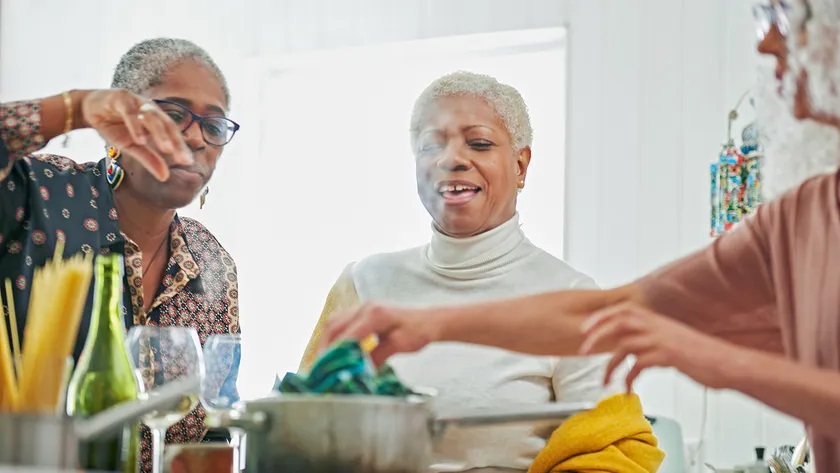
The Best Foods to Eat When You Have High Blood Pressure
If you’ve been diagnosed with hypertension, or high blood pressure, your doctor has probably advised you to make a number of lifestyle modifications, such as exercise and dietary changes. Eating a diet of nutrient-rich, low-sodium foods can lower blood pressure naturally, according to the National Heart, Lung, and Blood Institute (NHLBI).
“Natural nutrients are generally more packed with good antioxidants, which may get damaged when prepared for storage,” says John Higgins, MD, a professor of cardiovascular medicine at the UTHealth McGovern Medical School in Houston.
Dietary Recommendations Include Prioritizing Unprocessed Foods
Dietary recommendations from the NHLBI — called the Dietary Approaches to Stop Hypertension, or the DASH diet for short — promote eating fruits, vegetables, whole grains, low-fat dairy, lean sources of protein such as fish and poultry, beans, nuts and vegetable oils, while also limiting saturated fats, refined grains, processed foods, and added sodium.
The advantage of getting these nutrients through whole foods, rather than through supplements, is that our body is able to use them better. “A number of times when we have just separated out the one nutrient that we think is good, such as omega-3 fatty acids, vitamin C, or vitamin E, and given it as a concentrated pill, it has been shown to be either not as effective or completely ineffective when compared to the natural foods,” Dr. Higgins says.
What Is Considered High Blood Pressure?
According to the guidelines from the American College of Cardiology and the American Heart Association (AHA), the criteria for high blood pressure are as follows:
- Normal Less than 120/80 millimeters of mercury (mmHg)
- Elevated Systolic between 120 and 129 mmHg and diastolic less than 80 mmHg
- Stage 1 Systolic between 130 and 139 mmHg or diastolic between 80 and 89 mmHg
- Stage 2 Systolic at least 140 mmHg or diastolic at least 90 mmHg
- Hypertensive Crisis Systolic over 180 mmHg or diastolic over 120 mmHg, with patients needing prompt changes in medication if there are no other indications of problems, or immediate hospitalization if there are signs of organ damage
A large 2021 study of more than 9,000 patients published in The New England Journal of Medicine found that participants who got their systolic pressures below 120 mmHg saw their incidence of heart failure, heart attack, stroke, and death drop substantially in comparison with those who followed a more standard treatment plan, where the goal was to reduce their systolic pressure to less than 140 mmHg.
Lifestyle Changes Recommended for High Blood Pressure
The AHA encourages people with high blood pressure to:
- Eat a diet rich in fruit, vegetables, and whole grain foods, as well as fish and skinless poultry
- Limit alcohol
- Increase their physical activity
- Lose weight
- Reduce the amount of sodium in their diet
- Quit smoking
- Manage stress
If you’re worried about your blood pressure, the first step is to see your doctor and have your blood pressure checked. Then, after a discussion with your healthcare provider, it can help to start incorporating some of these foods into your meals. Your taste buds and your heart will thank you.